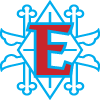Conversi and choir monks

he choir monks had a characteristic tonsure and wore a white habit and a black scapular; they lived in the eastern range and entered the church through the eastern entrance. The conversi or lay brothers wore ordinary clothes and they did not have the same rights as the choir monks.
Daily Monastic Schedule

he monk’s day began at 3:15 a.m. with the Vigils, proceeded by two hours of meditation. At 6:15 a.m. the Lauds, i.e. the Morning Office was sung, followed by Mass. At 8:00 a.m. the monks gathered for the Chapter meeting, where a chapter (in Latin capitulum) from the Rule of St. Benedict was read, practical assignments for the day were given and announcements made. Then the workday began. Work alternated with the Little Hours prayers at 9:00 a.m. (Terce i.e. the third hour of the day), at 12:00 a.m (Sext i.e. the sixth hour of the day) and at 3:00 p.m. (None i.e. the ninth hour of the day). At 12.30 p.m. the monks took their meal, together and one of the brothers read aloud a text for spiritual nourishment. At 6:00 p.m. there was the chanting of the Vespers, after the Vespers there was time for meditation and a possible discussion. Then a light meal was taken and the day ended with a Compline or completorium at 8:00 p.m.
In the Middle Ages the schedule was different in summer and in winter, as the length of day was calculated from the times of sunrise and sunset. So, for example the Vespers was celebrated between 2:50 p.m. and 3:30 p.m. in winter and between 6:00 p.m. and 6:45 p.m. in summer.
Monastic Garden and Plants

very monastery had gardens for cultivating herbs, vegetables and fruits, as well as flowers. The earliest description of a monastic garden can be found in the book Liber de cultura hortorum (Book on the Art of Gardening, 840), written by the abbot of the Reichenau Benedictine Abbey. The book mentions the following plants: sage, rue, southernwood, gourd, melon, wormwood, horehound, fennel, iris, lovage, chervil, lily, poppy, clary, balsam herb, mint, pennyroyal, celery, betony, agrimony, tansy or yarrow, catmint, radish and rose.
Thus, the Cistercians cultivated herbs for cooking and medicinal plants, from which herbal beverages were made and are still made.
On the 900th anniversary of Citeaux Abbey Delbard developed a new rose – a beautiful rose, which has fragrant blooms with frilled edges – and named it “Rose des Cisterciens“.
Prayer

pus Dei or the Divine Office brought the Cistercians together in church daily at specific hours to praise God. Communal prayer or “communal work” was and still is an important part of the monastic life, and although the monk’s daily schedule contained regular prayers, a special stress was laid on communal prayer. This service was also called the Liturgy of the Hours. The Liturgy of the Hours was not about using beautiful words to recite prayers or about chewing on pious thoughts in one’s mind, it was about sharing in homage to God by reading aloud of the Scriptures, singing the Psalms or maintaining silence.
Gregorian Chant

he Gregorian chants named after Pope Gregory the Great are prose texts in Latin, which are sung in unison, usually within an octave. These texts are canonical prayers, for example psalms or hymns to praise God, Jesus or the Virgin Mary. The Liturgy of the Hours is an exemplary Gregorian chant consisting of antiphons, psalms, and responsorial chants. The Liturgy of the Hours always ends with the special devotion to the Virgin Mary: this might be “Alma Redemptoris Mater”, “Ave Regina caelorum”, “Regina caeli Laetare” or “Salve Regina”. Traditionally, “Salve Regina” is sung at the end of the Compline.
Work

he Cistercians made their living by manual work; this distinguished the White Monks from other religious orders. Firstly, according to the Cistercian economic model the Cistercians refused to take any revenues earned by the work of the persons outside the monastery. The initial regulations of the order insisted that food for monks should come from their own manual work and everything that the brothers had could only be used inside the order. Secondly, the monastery was usually located farther away from inhabited places and its activity was organised so that the needs of the monastery would be covered by the monks’ own work. The statutes of 1134 Statuta capitulorum generalium ordinis Cisterciensis stipulated that all sources of additional income were strictly forbidden.
Food and drink

lthough the Cistercian monasteries were mighty edifices, the monks between the monastery walls pursued an austere way of life, the few habits they had were plain and their diet was simple.
The monks’ diet

he Cistercians were known not to eat meat (eggs and fish were allowed) according to their original rules. By the time the Padise Monastery was established, i.e. by the 14th century, the rules had been gradually slackened as experience showed that because of scanty and poor diet the monks did not live long and died early. First, meat began to be served to visitors at the abbot’s table. In the 14th century the sick monks were also served meat so that they would recover more quickly. On special occasions all monks were served meat at the abbot’s table. In about 1440 it was decided that each monk was allowed to eat meat once or twice a week. During the archaeological excavations a large number of cow, pig and sheep bones were discovered, so it is clear that meat was eaten at Padise.
Because of the restrictions on meat, fish occupied an important place in the monks’ diet. The archaeological evidence suggests that the monks’ diet included cod, turbot, eel, pike, European flounder, perch, common carp, common bream, common dace, European whitefish and Baltic herring. We know from the written records that the monastery had fishing rights in the rivers near Helsinki, where a lof of salmon was caught. The daily menu, however, consisted of coarse bread and two different hot vegetable dishes. If possible, there was a third meal which included fruit and vegetables, and eggs, fish, cheese or finer bread on feast days. In the southern parts of Europe the monks drank wine, in moderate amount of course, but in Estonia, where grapes were not grown, the daily drink was beer, very light when compared to today’s beer.
Meals – monastic customs

hen the meal was ready, a bell was rung. At the sound of the bell, the monks washed their hands, filed into the refectory and waited for the prior, who presided over the meal. After grace was sung, the cellarer (cellarius) and the cooks retrieved the hot dishes from the kitchen through a service hatch. The tables were generally arranged in two rows so that the monks sat facing inwards on the benches near the walls. In summer the monks ate twice a day, and once a day for most of the year, except on Sundays.
The monks’ meals were not simply for eating. The dishes had to be passed round as quietly as possible so that everybody could hear the reading. A monk (lector), who was the reader for a whole week, read aloud from the Scriptures or some other religious writing. A high pulpit projecting from the west wall like a balcony was built for the reader, and was accessed via a wall staircase. On the east wall opposite the pulpit, a devotional image or a carved wooden crucifix was hung. So the refectory was not only a place for bodily nourishment, but also a sacred space devoted to spiritual nourishment.
Discipline and punishments

he room next to the sacristy called the chapter hall was the meeting place for the choir monks. Every morning a chapter from the Rule of St. Benedict was read aloud, the name of the chapter hall is derived from this habit. Most of the monks probably knew the rules by heart, but it was important that the monks should reflect on them every day. The monks proceeded to the chapter hall not in the order of their ages, but in accordance with the number of their years in the monastery. Reaching the places designated to them, they first bowed towards the east, i.e. they turned to Christ, and then they bowed towards the centre, turning to their own community. The abbot’s place was in the centre at the east wall. The monks sat around the wall on the benches, the newest members of the monastery being closer to the door. The measurements of the room give us an idea of the size of the community, there may have been about 30 monks at Padise. For most of the day the monks, either alone or at mass, communicated with God, not with their companions, but when they met in the chapter hall their faces were turned to the community. The chapter meeting was presided over by the abbot, when he entered, everybody rose and bowed. Then the reader went to the lectern in the middle of the room. Before a chapter from the Rule of St. Benedict was read, the story of the saint or martyr commemorated on that day was read. After the reading of the chapter from the rule, the abbot commented on it.
Then each monk was invited to step forward and confess his sins and reveal his fellows’ faults or errors during the last day and night. The punishment was more severe if a monk failed to confess what he had done and it was revealed by somebody else. The culprit prostrated himself on the floor and waited for the abbot’s judgement. The abbot pronounced his judgement, and, in most of the cases, the punishment was shaming, fasting, demotion or corporal punishment. The latter was carried out immediately in the same room. In the case of more serious crimes, such as murder, theft, physical disobedience or rebellion, the monk might face imprisonment. On extreme circumstances the offender was excommunicated (all communication with him was forbidden) or expelled from the monastery. In order to avoid spreading rumours, it was absolutely forbidden for the monks to disclose the confessions that they heard or tell them to those outside or discuss or repeat them; everything that transpired in the chapter hall had to remain among those present and within the walls of the chapter hall. Then the tasks for the following week were assigned and put down on a wax board. Official letters sent by the Pope, or the Landmeister, or some other important person to the monastery were read. When the abbot died, a new one was elected. Often the previous abbot remained in the chapter hall, i.e. according to the Cistercian custom the abbots were buried there and a stone slab was set in the floor to commemorate the burial. At Padise burials in the chapter hall were not possible as the basement vaults were underneath the floor.










